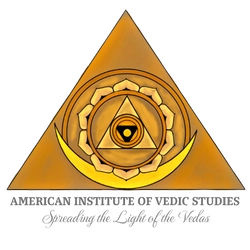Need for Higher Consciousness
How can we bring a higher consciousness into the world to create peace and harmony, removing all division and conflict? That is the foundation of the practice of Yoga. As long as we are trapped in our usual self-centered thoughts and emotions, we cannot end the problems in the world.
Yoga certainly provides us improved well-being for body and mind, which is very significant, but goes beyond that as well. Yoga helps us connect with our true nature and the nature of the universe itself in a way that may be as valuable as what modern science is discovering today.
Yoga has always been defined as a vidya or a way of knowledge. Yoga, which means union, aims at uniting the individual human being with the universal and transcendent consciousness. This requires a radical change in how we think, feel and look at life.
Yoga in the original sense is a science of consciousness, showing how to develop a higher awareness. This is not to say that Yoga is the same as modern science but that it constitutes another type of science with its own value and methodology that can complement what science offers.
Background of Yoga
Yoga as a term arises in Vedic texts, starting with the mantras of the Rigveda, one of the oldest books in the world. Yoga as a philosophy is first intellectually articulated in the Upanishads that discuss the nature of consciousness according to an inquiry into the most fundamental question of human life, “Who am I?” Upanishadic teachings are summarised in the Bhagavad Gita, which teaches various aspects of Yoga, with each chapter constituting a Yoga approach of its own.
The primary principles of Yoga were codified in a brief summary in the Yoga Sutras. Eventually many different Yoga teachings arose expanding into a vast system, like a gem with many facets.
Yoga Sutras defines Yoga as citta vritti nirodha, “calming the movements of the mind”, our individualised or conditioned form of consciousness. This definition implies an analysis and observation of all our mental activities. These are described as right knowledge, wrong knowledge, imagination, memory and sleep.
Yoga Sutras clarifies this statement, tada drastuh svarupe avasthanam, meaning “then there is abidance in the nature of the Seer.” Who is this seer? It is the pure consciousness, the true Self behind the body and mind, the Atman or Purusha of Upanishadic thought.
Yoga consists not merely of an intellectual examination but a profound meditative inquiry. Yoga is correlated with samadhi, the ultimate stage of Yoga practice. Samadhi is the state of unity consciousness in which the mind’s agitation is put to rest, and comes to function like a mirror to reflect the truth of reality. Samadhi is the ultimate foundation of the Vedic way of knowing.
Nature of Yogic Science
Yogic science begins with a different orientation than modern science. Modern science follows an outward orientation of the mind to discern the names, forms and quantities of the external world, which allows us to uncover the secret powers of nature and harness them through technology.
Yoga teaches us that there is another potential of the mind, an inner movement that extends our awareness beyond our human frontiers into the cosmic. The aim of Yoga is to discern the eternal essence of consciousness from the changing outer names, forms and quantities of the external world.
Ordinarily the mind’s knowledge is born of three factors of sensory perception (which includes its extension in various instruments), reason (which includes measurement and mathematics), and statements of learned or authoritative people (which includes the tradition of science).
Yoga teaches us that such mental knowledge reveals only the surface of reality, not the depths of pure consciousness that are boundless – to recognise which the mind must become silent and concentrated, receptive to the whole. Science is also beginning to discover that its laws have their limits beyond which subtler energies come into play that provide a very different view of reality.
Neuroscience and Yoga
Neuroscience today is learning how consciousness is related to brain function. It has verified through research that Yoga and meditation can relieve stress and promote higher brain activity.
Yet modern physics has deconstructed physical reality, revealing that apparent physical objects are but illusions of the senses. What actually exists behind physical reality are subtle waves and particles out of which force fields arise and create the appearance of solid matter. Some scientists posit a unitary field of consciousness to explain the coherence of the laws of nature, an insight shared by yogic science.
Modern medical science, however, has not progressed as far in deconstructing physical reality. It tries to understand human consciousness according to subtle chemical reactions in the brain. It does not as yet posit a unitary field of consciousness behind the brain, which Yoga has long proposed, and which seems logical given what physics suggests, though this may be its next step of development.
While neuroscience can describe the brain correlations of consciousness, we cannot reduce consciousness to the brain, any more than we can reduce physical reality to what our senses show. To try to explain consciousness relative to the workings of the brain is like trying to understand a person through his shadow. The movements of the shadow reflect the movements of a person, but cannot reveal who he is or the true nature of his existence.
Neuroscience can prove to society that Yoga and meditation have positive values for body and brain, but science must learn the yogic way of knowledge to truly understand all that Yoga can offer as a science of consciousness. This would require a new yogic neuroscience.
Yogic Way of Experiment
Yogic science requires that we observe our bodies and minds, as we would examine objects in the external world. It teaches us that we are not the body or the mind. The body is our external instrument of action in the physical world. The mind is our internal instrument of organising information. We are the inner being, the real person or true consciousness behind these instruments.
Yogic science requires experiments but these are done in our own minds through expanding our awareness. Yoga rests upon a code of behavior to keep our awareness clear and focused, as defined in the yamas and niyamas of Yoga practice, like the yogic attitude of ahimsa or non-violence to promote peace within and around us.
The yogic approach to asana brings health to the body but also calms the body to support a higher awareness. The yogic approach to the breath and prana affords more vitality but also helps us unfold a deeper energy of consciousness. The yogic approach to the senses encourages us to use the senses in a contemplative manner and no longer be conditioned by sensory reactions, opening our inner intuitive vision.
The yogic approach to concentration shows us how to cultivate a positive power of attention for deeper learning and clearer perception. The yogic approach to meditation, its prime practice, enables us to turn our minds into vehicles of a higher awareness beyond the distortions of our mental conditioning. This leads us to the yogic state of samadhi or unity consciousness that reveals the true nature of reality as unlimited Being-Consciousness-Bliss, Sat-Cit-Ananda.
The Way Forward
For humanity to truly progress, not only in terms of technology but also in the consciousness to harmoniously apply it, we must cultivate both the inner and the outer sciences, both yogic science and modern science. We must understand their interface, their similarities and their differences. We need a comprehensive and integral way of knowledge that addresses our full human potential and the supreme goal of life of higher awareness leading to the Infinite.
For this purpose, it is important to introduce Yoga into schools as part of a healthy and conscious life-style and attitude. This should begin with Yoga asanas but extend to yogic practices relative to the prana, senses and mind. Above all, we must learn the cultivation of attention in order to make better decisions and have a correct perception in all that we do.
Without a meditative mind it will be very hard to apply our new information technology in a way that does not overwhelm us. Yet the educational systems in the world today are doing little to address our declining attention spans and lack of internal calm, except to develop new drugs to deal with them that are both expensive and have many side effects.
Yoga addresses this deficiency of attention in a systematic manner. Yoga links us not just to a new technology but to a new consciousness and new view of Self that is unifying rather than dividing. This requires a yogic way of life and a yogic culture, such as India has preserved for the world, based upon yogic science.
Yoga is the beginning and the end, the past and the future, the eternal essence that we must strive to know so we can understand the conscious universe in which we live. Then all life will be Yoga, and unity will be our core experience of existence.
Sri Yoga Purushaya Namah!







